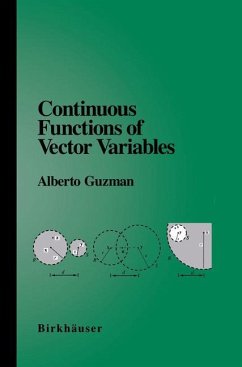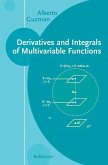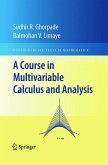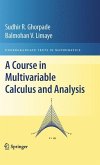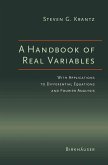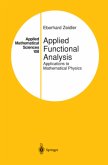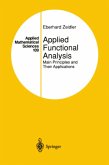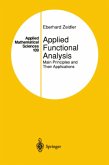This text is appropriate for a one-semester course in what is usually called ad vanced calculus of several variables. The focus is on expanding the concept of continuity; specifically, we establish theorems related to extreme and intermediate values, generalizing the important results regarding continuous functions of one real variable. We begin by considering the function f(x, y, ... ) of multiple variables as a function of the single vector variable (x, y, ... ). It turns out that most of the n treatment does not need to be limited to the finite-dimensional spaces R , so we will often place ourselves in an arbitrary vector space equipped with the right tools of measurement. We then proceed much as one does with functions on R. First we give an algebraic and metric structure to the set of vectors. We then define limits, leading to the concept of continuity and to properties of continuous functions. Finally, we enlarge upon some topological concepts that surface along the way. A thorough understanding of single-variable calculus is a fundamental require ment. The student should be familiar with the axioms of the real number system and be able to use them to develop elementary calculus, that is, to define continuous junction, derivative, and integral, and to prove their most important elementary properties. Familiarity with these properties is a must. To help the reader, we provide references for the needed theorems.
Hinweis: Dieser Artikel kann nur an eine deutsche Lieferadresse ausgeliefert werden.
Hinweis: Dieser Artikel kann nur an eine deutsche Lieferadresse ausgeliefert werden.
"The book is devoted to mathematical analysis in multi-dimensional spaces, including infinite-dimensional ones...One of the important characteristics of the text is the topological approach. ...It is worth mentioning that all these ideas are presented in conformity with the situation, i.e. they are strictly related to normed spaces and no unnecessary abstract setting is used. ... The language is very clear and sometimes very 'fresh' if compared with classical textbooks, so that it may better appeal to the reader. There are many exercises, and the book concludes with a chapter containing solutions."
-MATHEMATICAL REVIEWS
"This is a textbook on calculus of several variables. It covers algebraic and metric structure of the Euclidean space, convergence, basic properties of continuous functions and topology in normed spaces.... In my opinion, this topological approach is one of the advantages of the book under review. It is written very clearly and contains numerous examples and instructive pictures. Each section is endowed with a set of exercises, and the book is concluded with solutions to these exercises. This is a nice and user-friendly textbook which can be recommended for a one-semester course in multivariable calculus."
-ZENTRALBLATT MATH
"The presentation is detailed and clear. The leisurely discursive style adopted by the author will be appreciated by beginners. The fact that the solution of each and every exercise can be found at the end of the book, considerable enhances its value and makes it suitable also for individual study. This book successfully bridges the gap between elemntary calculus and such higher disciplines as real functions, general topology, and, in particular, functional analysis."
-PUBLICATIONES MATHEMATICAE, DEBRECEN
-MATHEMATICAL REVIEWS
"This is a textbook on calculus of several variables. It covers algebraic and metric structure of the Euclidean space, convergence, basic properties of continuous functions and topology in normed spaces.... In my opinion, this topological approach is one of the advantages of the book under review. It is written very clearly and contains numerous examples and instructive pictures. Each section is endowed with a set of exercises, and the book is concluded with solutions to these exercises. This is a nice and user-friendly textbook which can be recommended for a one-semester course in multivariable calculus."
-ZENTRALBLATT MATH
"The presentation is detailed and clear. The leisurely discursive style adopted by the author will be appreciated by beginners. The fact that the solution of each and every exercise can be found at the end of the book, considerable enhances its value and makes it suitable also for individual study. This book successfully bridges the gap between elemntary calculus and such higher disciplines as real functions, general topology, and, in particular, functional analysis."
-PUBLICATIONES MATHEMATICAE, DEBRECEN

